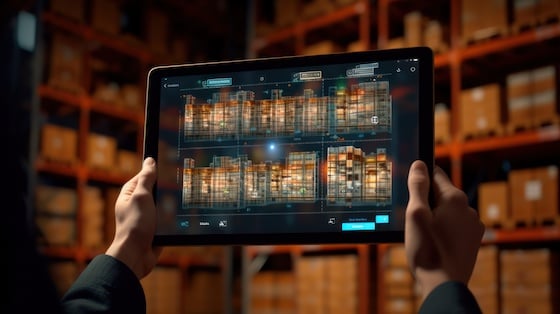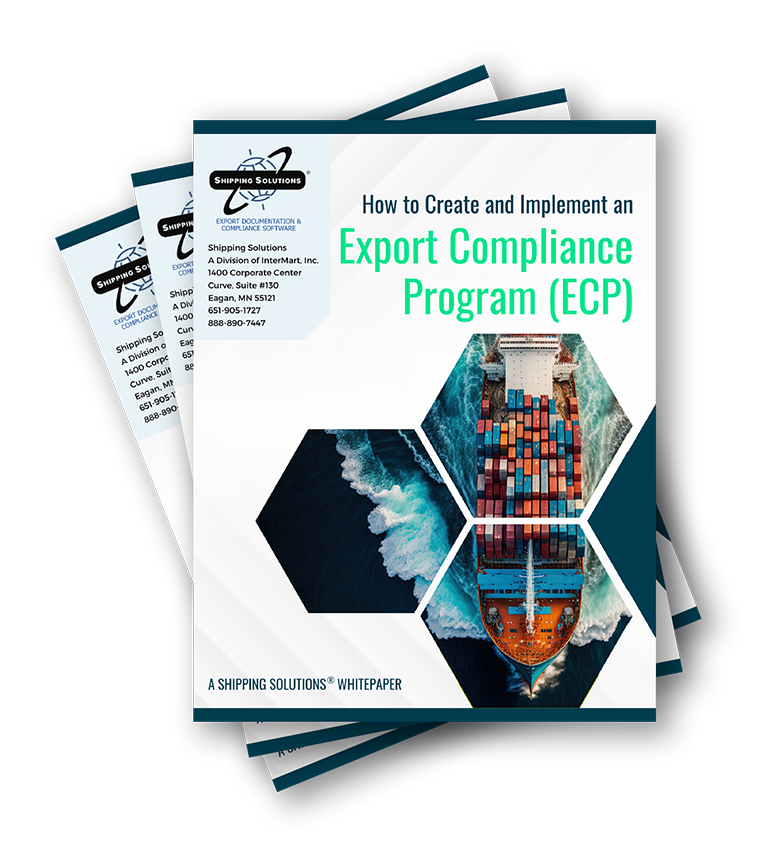The International Trade Blog Export Compliance
The ITAR-Controlled Item You Never Knew You Had
On: September 27, 2023 | By:  Lindsay Bernsen Wardlaw |
6 min. read
Lindsay Bernsen Wardlaw |
6 min. read
 Defense articles and related technical data (and services) are subject to stricter export controls than most other commercially available and commercially used items, and their manufacture in or export from the United States requires advance registration with the U.S. Department of State’s Directorate of Defense Trade Controls (DDTC). (In fact, if you do anything at all with defense articles, from selling them to transporting or insuring them, you may need to be registered with DDTC!)
Defense articles and related technical data (and services) are subject to stricter export controls than most other commercially available and commercially used items, and their manufacture in or export from the United States requires advance registration with the U.S. Department of State’s Directorate of Defense Trade Controls (DDTC). (In fact, if you do anything at all with defense articles, from selling them to transporting or insuring them, you may need to be registered with DDTC!)
For this reason, many companies take care to avoid producing or exporting defense articles.
But sometimes defense articles are easy to overlook, and when they sneak into your other dual-use item, they affect the licensing restrictions that apply to the entire end item! Items that may seem innocuous when considered independently, that do not have a planned military application, or that are not directly listed as controlled defense articles on the U.S. Munitions List (USML) may nevertheless be controlled by the International Traffic in Arms Regulations (ITAR).
The “See-Through” Rule
One of the most common ways an item that does not appear to have a military application may wind up covered by ITAR controls is by application of the ITAR’s “see-through” rule. When an ITAR-controlled part is placed into another item—even a wholly commercial end product, the entire end product is now subject to the ITAR, because the ITAR “sees through” the end item to the controlled component. This “see-through” rule ensures that the end product isn’t placed into the hands of a party that will disassemble it to retrieve the ITAR-controlled component.
Defense Articles that May Surprise You
The see-through rule is not, however, the only way your ostensibly commercial item could in fact be subject to the ITAR. You should be aware that the following kinds of items are often defense articles:
- Any items and information classified for national security reasons, even when not enumerated on the USML; items produced from items and information classified for national security reasons, even when the items are not enumerated on the USML; and parts and accessories for those items.
- Items that are not enumerated on the USML that are being developed (i.e., that haven’t yet entered production for customers) with Department of Defense funding or under a Department of Defense contract, unless the U.S. government specifies in the contract or DDTC specifies in a Commodity Jurisdiction request that it understands that the items are being developed for a commercial application in addition to the contracted defense application. (A Commodity Jurisdiction Request is an export control classification request submitted to DDTC. It is so named because DDTC has the authority not only to provide a specific classification for a good on the USML, but also to say that the item is not subject to the ITAR at all and instead is controlled under the Export Administration Regulations.)
- Parts made for, or that will be used in, or that especially enhance, a defense article, unless you can prove that they weren’t specially designed for that article (e.g., as a generic fastener or as a commodity also developed or sold for commercial use). In some cases, this may require you to show market research and design work that shows how the item was developed with a civil end-use (or a civil end-use in addition to a military end-use) in mind.
- Any other items not enumerated on the USML that DDTC thinks should be controlled. DDTC retains the authority to decide that items that are not directly listed on the ITAR are nevertheless ITAR-controlled under a special category just for this purpose: ITAR Category XXI. DDTC has this authority in order to ensure that appropriate controls are applied to advanced defense technologies that were not envisioned when the ITAR was drafted. It must ultimately amend the ITAR to create specific entries for such items over time, but until it does, the items could be controlled by Category XXI. Be wary!
Recommendations for Determining if Your Item Is ITAR-Controlled
Always classify your item for export by reviewing the ITAR’s USML before reviewing the Commerce Control List (CCL) in the Export Administration Regulations (EAR). (The Commerce Control List contains controls on less-sensitive items that have either a dual commercial and defense application or a solely commercial application.)
If you follow this process (called the “order of review”), you may find cross-references that help you determine how your product, and its software or technology, is classified. For example, the ITAR contains notes that control the software or technology associated with certain items that are themselves classified on the CCL, and it has other notes that place some items that would appear to be covered by the ITAR under the jurisdiction of the EAR instead.
If you do not see your product directly enumerated on the USML, but you are aware that it is a part that is used in a defense article or it was developed with government inputs, under a government contract, or with government funding take a closer look at the ITAR with your trade compliance team or counsel. Your item may in fact be ITAR-controlled.
Likewise, if your item seems suited to a military or defense application but is not listed on the USML, do not assume it isn’t covered. Work with your trade compliance team or counsel to ask the government whether the ITAR applies to your item using a Commodity Jurisdiction request. Do this before sending the item out of the United States or to U.S.-based customers who indicate that they will be sending the items out of the United States.
Finally, to determine if the see-through rule applies to products purchased from third parties or assembled from components purchased from third parties (or if the ITAR applies to these items more directly), companies should require their suppliers to provide them with export control classifications for all purchased materials.
What If My Item Is a Defense Article Controlled By the ITAR?
Every export of an item that is controlled by the ITAR requires an export control license from DDTC prior to shipment, regardless of destination. This license may limit the quantity or total dollar value of goods shipped, the parties to the transaction, or other elements of the transaction, and you must follow the license terms exactly or seek approval from DDTC for any deviation.
Further, defense articles may not be sent to any country listed in 126.1(d)(1), Table 1; DDTC has a policy to deny license applications for exports to these countries. These countries are known as “arms embargoed” countries and at the time of this writing include: Belarus, Burma (Myanmar), China, Cuba, Iran, North Korea, Syria and Venezuela.
In contrast, DDTC may permit exports to countries in the list in 126.1(d)(2), Table 2 with a license, provided that the restrictions described in 126.1 (also described in more depth by DDTC here) are met.
Before you can apply for a license, you must also register with DDTC, and you must renew this registration annually. As part of this registration process, and before exporting the item or its technical data (including during continuing cross-border research, development, production or manufacturing within your own company or with contractors), you should put a comprehensive export control program in place that accounts for all ITAR requirements. The DDTC has provided guidelines for ITAR compliance programs here.
If you need help determining if your item is subject to the ITAR, registering with the DDTC or applying for a license, seek help from a trade compliance professional or from your counsel!
Like what you read? Join thousands of exporters and importers who subscribe to Passages: The International Trade Blog. You'll get the latest news and tips for exporters and importers delivered right to your inbox.

About the Author: Lindsay Bernsen Wardlaw
Lindsay is an international trade attorney and former trade compliance manager with extensive experience developing export controls, sanctions, antiboycott and customs compliance programs, both in-house and for clients. She is currently an associate at Gibson, Dunn & Crutcher LLP. Formerly, she was the Vice President of Trade Advisory Services for Amalie Trade Compliance Consulting, a boutique consulting firm that focuses on practical and sustainable compliance solutions. Lindsay holds a B.A. in International Political Economy with a minor in Political Science. She has a J.D. from the University of Michigan School of Law. She is also a Licensed Customs Broker.
Lindsay’s blog posts are not legal advice.


